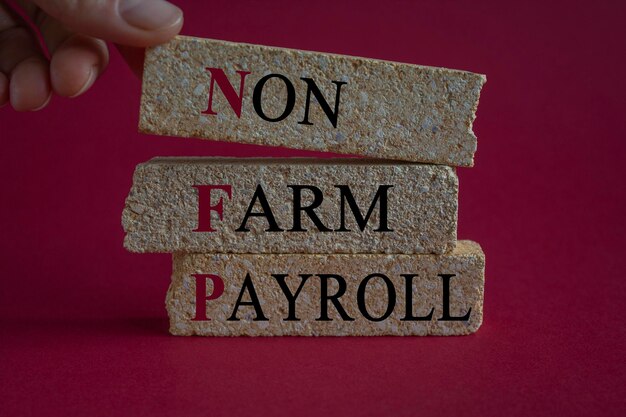Understanding Food Stamps: Are They Really Frozen?
In a world where economic uncertainties strike at any moment, food security becomes a shelter against the storm. As many individuals and families navigate these challenges, food stamps—or Supplemental Nutrition Assistance Program (SNAP) benefits—often become a lifeline. Yet, when discussing the system, a common question emerges: Are food stamps 'frozen'? Let's dive into this topic, unravel its complexity, and lay out a guide on what this means for SNAP beneficiaries.
📦 What Does "Freezing" Food Stamps Mean?
The phrase "freezing food stamps" might conjure up images of benefits being literally or figuratively put on hold. However, understanding this concept requires exploring what "frozen" signifies within SNAP's framework.
1. Operational "Freeze" Explained
In the realm of food assistance programs, "freezing" doesn't mean the benefits expire or vanish. Instead, it refers to administrative or policy changes that pause benefit adjustments or limit increases. For recipients, this could mean their monthly benefit amount doesn't rise as expected despite increased living costs.
2. Causes Behind the 'Freeze'
Several factors can lead to a perceived freezing of food stamps:
- Budget Constraints: Government fiscal policies might restrict SNAP budget expansions.
- Policy Changes: Shifts in federal or state regulations may temporarily halt benefit updates.
- Economic Indicators: During economic stability, food stamp enhancements might decelerate.
3. Impact on Beneficiaries
While benefits aren’t typically withdrawn, "freezing" can potentially affect purchasing power. Inflation may reduce the actual value of fixed benefits, challenging recipients to meet their dietary needs on a static budget.
🔍 Deeper Dive into SNAP and Benefit Allocations
To truly grasp the intricacies of benefit "freezes," it's crucial to understand how SNAP determines allocations and adjusts them over time.
How SNAP Works
SNAP is designed to assist low-income individuals and families in purchasing food. The benefits are determined based on:
- Income: Lower income corresponds with higher benefits.
- Household Size: Larger households receive increased allocations.
- Costs of Living: Adjustments are sometimes made for regional cost of living differences.
Adjustments Over Time
Typically, SNAP benefits undergo periodic reviews. Adjustments align with the Thrifty Food Plan, which sets a budget for a nutritional diet. This plan evolves, reflecting food prices to ensure the benefits awarded sufficiently cover essential needs.
🌐 Broader Implications of SNAP Freezing
The potential freeze on food stamps extends beyond immediate beneficiaries and affects various socioeconomic facets.
Economic Impact
When benefits stall, the ripple effects hit local economies. Many small businesses and grocery stores serving communities reliant on SNAP may experience reduced sales, potentially impacting employment and community services.
Social Considerations
Freezing benefits can escalate food insecurity issues, exacerbating health issues related to poor nutrition, which can perpetuate cycles of poverty and hinder educational outcomes for children.
💡 Practical Insights and Tips for Managing SNAP Benefits
With a better understanding of what a freeze entails, here are some practical steps and strategies for managing your SNAP benefits effectively during such times.
1. Maximizing Your Benefits
- Nutrition Education: Learn about low-cost, nutritious meals to optimize spending.
- Budgeting Workshops: Many communities offer budgeting advice that includes shopping tips and resources.
- Food Pantries: Supplement your groceries through local food banks, especially when budgeting is tight.
2. Stay Informed and Proactive
- Policy Updates: Keep an eye on news from SNAP administration for updates on potential benefit adjustments.
- Advocacy: Engage in community discussions or campaigns advocating for SNAP enhancements.
3. Utilize Technology
- Apps and Websites: Tools that track spending and offer discounts can help stretch your SNAP dollars further.
- Online Recipes: Explore affordable recipes tailored to SNAP budgets, available across various platforms.
🔑 Key Takeaways: Navigating Frozen Benefits
- 🧊 Understand Freeze Context: Administrative actions, not an abrupt halt in benefits.
- 💵 Monitor Budgets: Adjust household expenses to meet fixed benefits.
- 📲 Leverage Community Resources: Access food banks and local programs supplementing SNAP.
- 📰 Stay Updated: Follow updates from SNAP for any policy changes or adjustments.
🌟 The Bigger Picture: A System in Transition
SNAP continues to be a pillar in the fight against hunger and poverty. While discussions about freezing benefits may sound alarming, understanding the context reduces uncertainty. These challenges inspire innovation, encouraging community-driven solutions and prompting dialogue for change. As we navigate this system together, community support, resourceful planning, and staying informed are crucial in ensuring that no one falls through the cracks during periods of change.

Related Topics
- Am I Eligible For Food Stamps
- Are Food Stamps Being Cut
- Are Food Stamps Federal Or State
- Are Food Stamps Funded By Taxpayers
- Are Food Stamps Going Away
- Are Food Stamps Income Limits
- Are Food Stamps Paused
- Are Illegal Aliens Eligible For Food Stamps
- Are Illegal Immigrants Eligible For Food Stamps
- Are Illegal Immigrants Getting Food Stamps